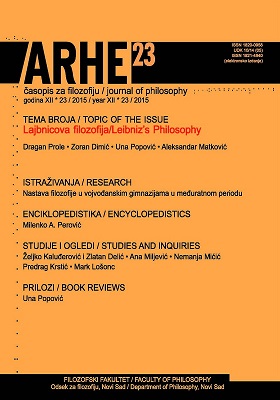

These analogies between aesthetics and logic and reason and analogon rationis provide this result: aesthetics as the sensible representation of logical perfection. While reason correlates with concepts, analogon rationis correlates with aisthesis. They (analogon rationis) can only correlate between those representations analogous to reason. Inferior cognitive faculties cannot categorize or distinguish representations from each other like understanding or reason. In other words aesthetics/inferior cognitive faculties such as the science of blurry, uncertain and dark perceptions and sensible knowledge, aim to work in an analogous way to the logic/superior cognitive faculties which make up the science of certain and clear truth. The sensitive faculty of characterizationįor Baumgarten, inferior cognitive faculties work in a similar way to superior cognitive faculties. The inferior faculty - for knowing the differences of thingsħ. The inferior faculty - for knowing the correspondences of thingsĢ. According to him, inferior cognitive faculties can be classified as below:ġ. In Baumgarten’s work Metaphysica, inferior cognitive faculties are called analogon rationis. Thus the faculty of knowledge - that is uncertain and based on sensations - is called the inferior faculty of knowledge and this faculty is presented in the soul. According to Baumgarten, inexplicit, confusing or dark representations and similar elements in the soul are sensible representations. Baumgarten’s intention is to make room for aesthetics in history of philosophy with epistemological concern. Furthermore, he states that sensible knowledge –which he described as the material of the soul’s dark side- can be perfect by itself and he defines this condition as ‘beautiful’.

Considering that sensible knowledge should be addressed as systematic knowledge - just like logical knowledge - he puts aesthetics into the service of philosophy as the science of sensible knowledge. Baumgarten –in contrast to Leibniz and Wolff – states that sensations presented as low, dark, blurry and misleading can also have their own perfection. This argument clearly explains why Baumgarten is considered ‘the father of aesthetics” in the history of philosophy. For Baumgarten sensible knowledge should also be a branch of science - like logic.

Baumgarten’s statement places more importance on sensible knowledge. According to Leibniz and Wolff, sensible knowledge is identified as blurry and misleading. It could be asserted that this determination by Baumgarten was an attempt to draw a new boundary at a time when the intellectual impact of Leibniz and Wolff’s tradition on Germany was being felt deeply. In this same work, Baumgarten has stated that with superior cognitive faculties one understands logic, while with inferior cognitive faculties one understands aesthetics. These two types of knowledge that Baumgarten refers to are: logical knowledge and sensational knowledge. Here, aesthetics is presented as a concept that is chosen to distinguish between two types of knowledge. It in his work Meditationes philosophicae de nonnullis ad poema pertinentibus that Baumgarten first uses the concept of aisthesis in its original meaning in terms of sense and perception.

In this study, aesthetics’ and logic’s positioning in Alexander Baumgarten’s philosophy, which is considered a milestone in modern philosophical aesthetics, will be explained.


 0 kommentar(er)
0 kommentar(er)
